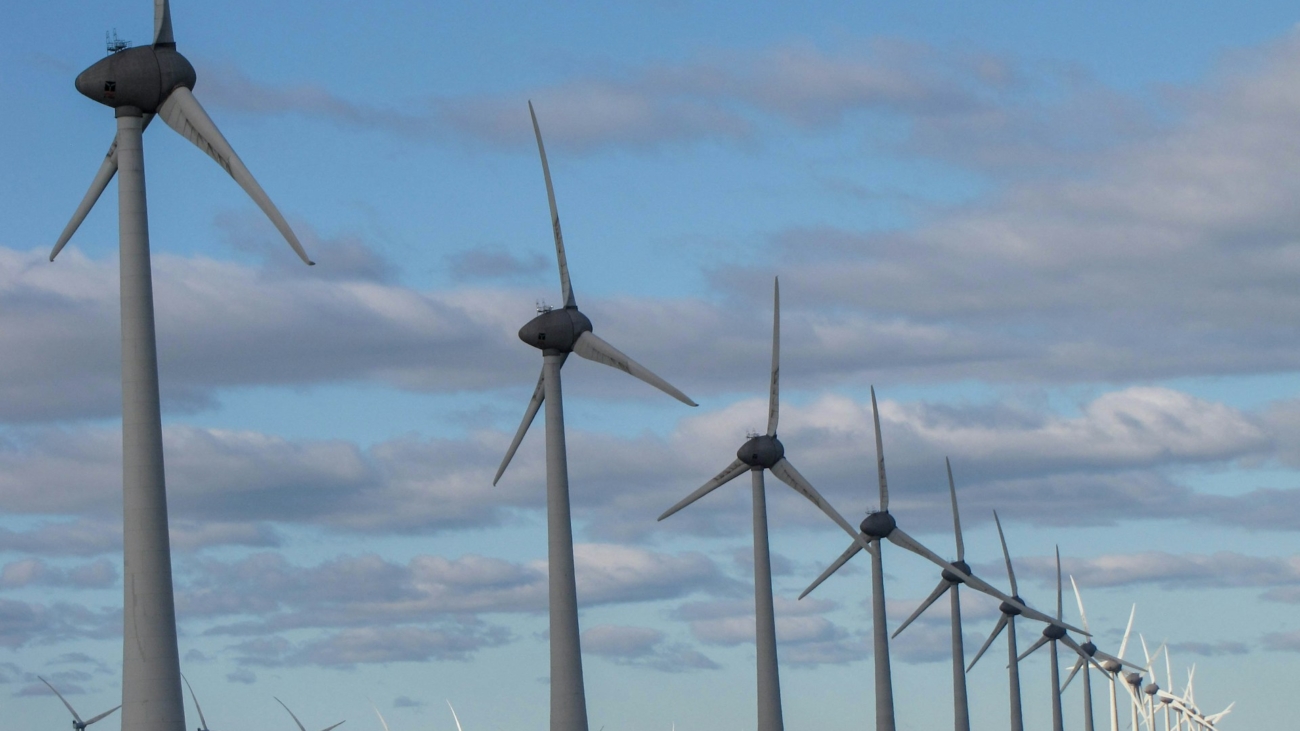Principles of Wind Energy Generation
Wind turbines convert wind energy into electrical energy through the following steps:
- Wind Capture: Wind turbines capture wind using blades that rotate around a central hub.
- Mechanical Energy: The rotational motion of the blades, driven by wind, is converted into mechanical energy.
- Electromagnetic Induction: The mechanical energy rotates a shaft connected to a generator, where electromagnetic induction occurs. Here, coils of wire spin within a magnetic field, inducing an electric current.
The efficiency and power output of wind turbines depend on several factors, including wind speed, turbine design, and the efficiency of the electromagnetic system.
Efficiency of Wind Turbines
The efficiency of wind turbines can be analyzed in two main areas: aerodynamic efficiency and generator efficiency.
- Aerodynamic Efficiency: This refers to how effectively the turbine blades convert wind energy into mechanical energy.
- Betz Limit: The theoretical maximum efficiency for wind turbines is about 59.3%, known as the Betz Limit. This means only 59.3% of the wind’s kinetic energy can be converted into mechanical energy.
- Practical Efficiency: In practice, modern turbines achieve about 70-85% of the Betz Limit, resulting in an aerodynamic efficiency of around 41-50%.
- Generator Efficiency: This refers to how effectively the mechanical energy is converted into electrical energy by the generator.
- Electromagnetic Systems: Generators typically have an efficiency of 90-95%, meaning only a small fraction of the mechanical energy is lost during conversion.
- Friction and Heat Losses: Friction in the bearings and other mechanical components, along with heat generated in the coils and magnetic cores, contribute to energy losses.
Power Losses in Wind Turbines
Power losses in wind turbines occur due to several factors:
- Friction: Bearings and gearboxes experience friction, which converts some of the mechanical energy into heat, reducing overall efficiency.
- Heat: Resistance in the generator’s coils and other electrical components generates heat, which dissipates energy.
- Aerodynamic Drag: Blade design and air resistance can also result in energy losses.
On average, about 10-20% of the total energy captured by the turbine is lost due to these factors.
Increasing Efficiency of Wind Turbines
Several strategies can be employed to increase the efficiency of wind turbines:
- Advanced Blade Design: Optimizing blade shape and materials can reduce aerodynamic drag and improve energy capture.
- Longer Blades: Longer blades capture more wind energy but require stronger materials to withstand the increased forces.
- Adaptive Blades: Blades that adjust their pitch in response to wind speed changes can maintain optimal aerodynamic performance.
- Enhanced Generator Technology: Improving generator design and materials can reduce electrical losses.
- Superconducting Generators: These generators use superconducting materials that have zero electrical resistance, significantly reducing energy losses.
- Permanent Magnet Generators: These are more efficient than traditional generators, as they reduce the need for electrical power to create the magnetic field.
- Friction Reduction: Using advanced lubricants and bearings can minimize friction losses in mechanical components.
- Magnetic Bearings: These bearings use magnetic fields to support the turbine shaft, reducing mechanical friction.
- Heat Management: Effective cooling systems can dissipate heat generated in the generator and other components, maintaining efficiency.
- Liquid Cooling: Liquid cooling systems are more effective than air cooling, providing better heat dissipation.
Maximizing Power Production
To maximize power production from wind generators, the following strategies can be implemented:
- Optimal Siting: Placing turbines in locations with consistent and strong winds ensures maximum energy capture.
- Wind Resource Assessment: Detailed studies and modeling can identify the best locations for wind farms.
- Control Systems: Advanced control systems can optimize turbine performance and power quality.
- Pitch Control: Adjusting the blade pitch to maintain optimal angle of attack improves efficiency across different wind speeds.
- Yaw Control: Aligning the turbine with the wind direction maximizes energy capture.
- Grid Integration: Efficient integration with the electrical grid ensures that generated power is effectively utilized.
- Power Electronics: Inverters and converters can manage voltage and frequency variations, ensuring stable power output.
- Energy Storage: Batteries and other storage systems can store excess energy generated during high wind periods for use during low wind periods.
- Maintenance and Monitoring: Regular maintenance and real-time monitoring can prevent downtime and improve turbine lifespan.
- Predictive Maintenance: Using sensors and data analytics to predict and address potential issues before they cause failures.
Conclusion
Wind energy generators are a cornerstone of renewable energy solutions, offering a sustainable way to meet growing energy demands. By understanding the principles of wind energy generation, identifying and mitigating power losses, and implementing strategies to increase efficiency, we can maximize the power production of wind turbines. Advances in blade design, generator technology, and control systems, coupled with strategic siting and effective maintenance, are essential to harnessing the full potential of wind energy and contributing to a greener, more sustainable future.

